#nicolas poussin
Explore tagged Tumblr posts
Text
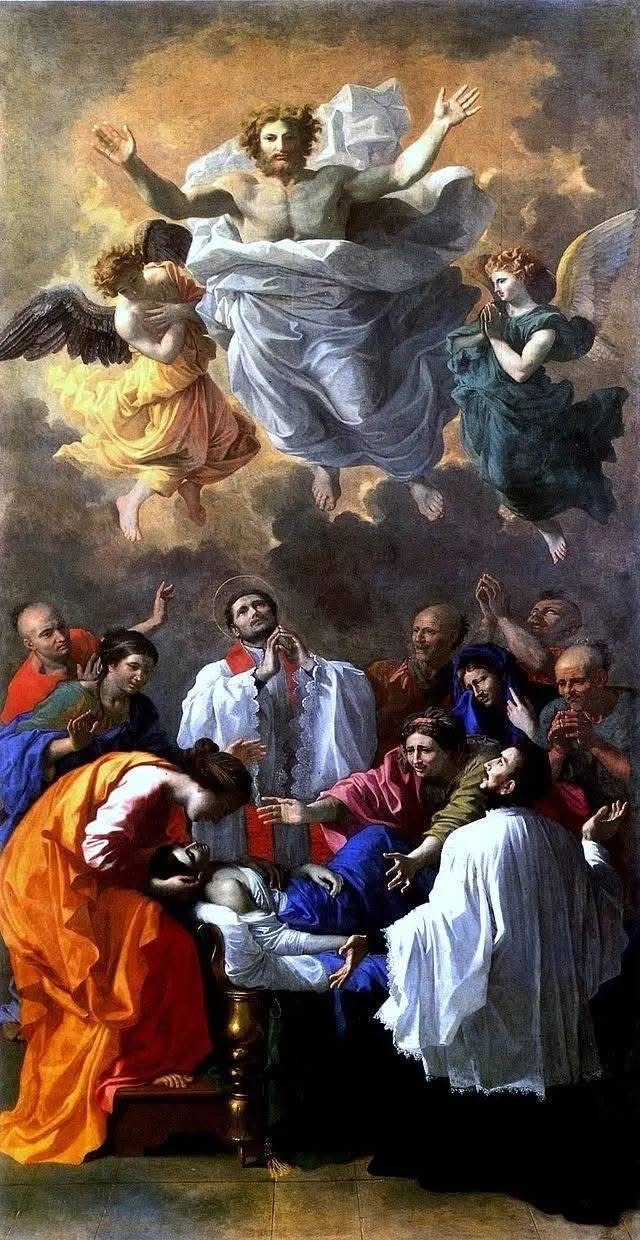
Nicolas Poussin
#nicolas poussin#angel#angelcore#art#artwork#fine art#fineart#painting#art history#history of art#women in art
72 notes
·
View notes
Text

Title: Hannibal Crossing the Alps on an Elephant Artist: perhaps Nicolas Poussin (French, 1594-1665); attribution disputed Date: ca. 1625-26 Genre: historical painting Period: French Baroque Movement: Classicism Medium: oil on canvas Dimensions: 100 cm (39.3 in) high x 133 cm (52.3 in) wide Location: private collection
#art#art history#Nicolas Poussin#historical painting#ancient history#Punic Wars#Hannibal Barca#Baroque#Baroque art#French Baroque#Classicism#French art#17th century art#oil on canvas#private collection
81 notes
·
View notes
Text
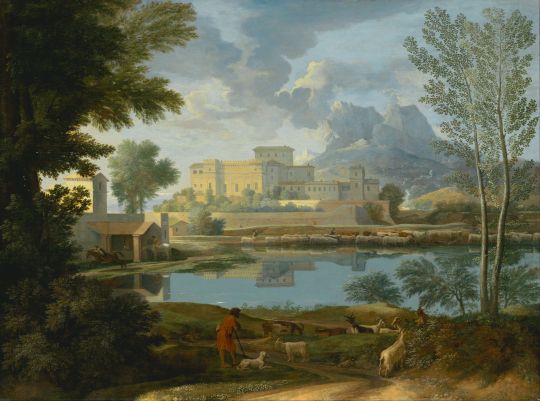
Landscape with a Calm by Nicolas Poussin, 1650-1651.
#classic art#painting#nicolas poussin#french artist#17th century#baroque#landscape#lake#buildings#trees#man#goats
72 notes
·
View notes
Text
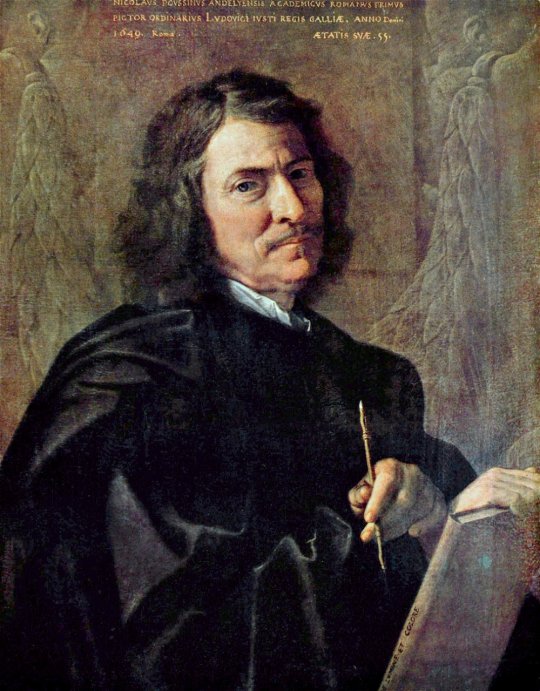
Nicolas Poussin (1594–1665) - Self portrait
14 notes
·
View notes
Text
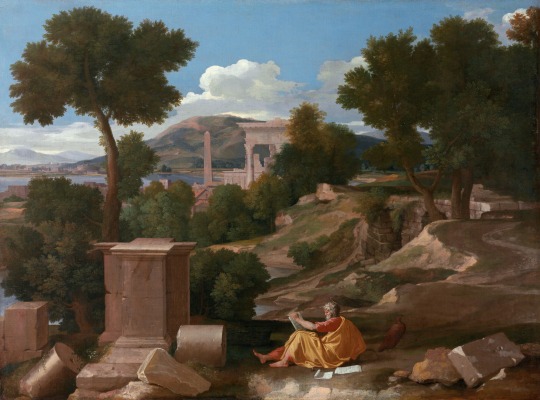
Landscape with Saint John on Patmos
Artist: Nicolas Poussin (French, 1594–1665)
Date: 1640
Medium: Oil on canvas
Collection: Art Institute of Chicago, Chicago, IL, United States
Saint John on Patmos
Patmos is a small Greek island in the Aegean Sea and is mentioned only once in Scripture. The apostle John relates that he was writing the book of Revelation from the isle of Patmos “because of the word of God and the testimony of Jesus” (Revelation 1:9). That is, John was exiled there by the Roman government because of his proclamation of the gospel. It was on the island of Patmos that John received messages from Jesus to the churches and visions related to the end times.
In New Testament times, Patmos was a destination for criminals and political prisoners. Convicts were allowed relative freedom to roam the small island, but most had to provide their own food and shelter and were guarded by Roman soldiers against leaving. Many died of exposure, violent attacks by other convicts, or starvation. Tradition holds that John’s friends and followers in Ephesus sent food and other supplies to John on the island, and that is how he survived.
#biblical art#biblical scene#landscape#saint john the baptist#narrative art#christianity#oil on canvas#sea#classical ruins#man#writing#greek architecture#book of revelation#fine art#oil painting#artwork#art and the bible#isle of patmos#painting#christian art#christian faith#biblical#classicism#french culture#french art#nicolas poussin#french painter#european art#17th century painting#art institute of chicago
16 notes
·
View notes
Text
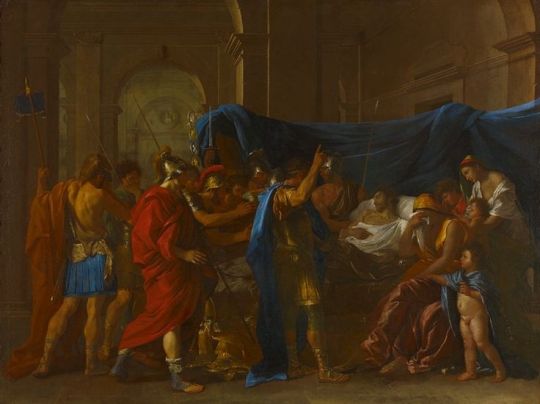
The Death of Germanicus
Artist: Nicolas Poussin (French, 1594-1665)
Date: 1617
Medium: Oil on canvas
Collection: Minneapolis Institute of Art, Minneapolis, Minnesota, United States
Description
The young Roman general Germanicus has just been poisoned by his jealous adoptive father, the emperor Tiberius. On his deathbed, Germanicus asks his friends to avenge his murder and his wife to endure her sorrow bravely. A key work in Western painting, this tragic picture presents a moral lesson in stoic heroism, notably in the restraint and dignity of the mourning soldiers.
#painting#historical art#historical scene#the death of germanicus#ancient history#ancient roman general#deathbed#narrative art#artwork#fine art#interior#architecture#drapery#men#woman#children#costume#roman soldiers#oil painting#oil on canvas#french culture#french art#nicolas poussin#french painter#european art#17th century painting#minneapolis institute of art
12 notes
·
View notes
Text
Simple Art Posters & Canvas Prints
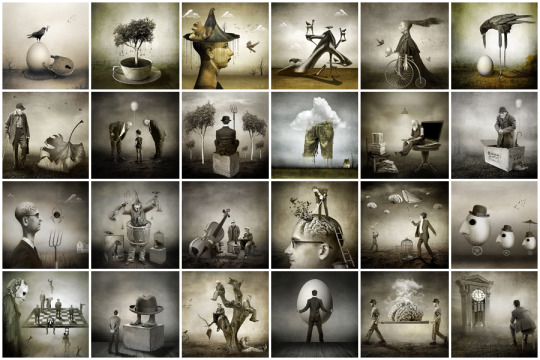
100+ Famous Artists of All Time
#Jenny Saville#Georges Seurat#Rembrandt#balthus#El Greco#Diego Velázquez#Peter Doig#James Little#Paul Cézanne#Robert Motherwell#Thomas Gainsborough#Amedeo Modigliani#Banksy#Ingres#Giorgio de Chirico#Masaccio#NICOLAS POUSSIN#Jean Arp#RAFFAELLO SANZIO#Jasper Johns
72 notes
·
View notes
Text

source : @cheminer-poesie-cressant
.
déjà, n’a plus rien à dire d’ancien
il a ruiné l’évidence de la durée
nous avançons à tâtons dans l’obscurité
qu’il vient de faire tomber entre nous
.
© Pierre Cressant
(vendredi 27 décembre 2024)
#poème#poésie#poésie en prose#poètes sur tumblr#poème en prose#prose poétique#poètes français#french poetry#poésie contemporaine#poètes français#amour#déjà#vanité#fugacité#éphémère#art paintings#peinture#nicolas poussin#vénus et adonis
15 notes
·
View notes
Text

Nicolas Poussin (After) - Adoration of the Magi
22 notes
·
View notes
Text

Hymenaeus Disguised as a Woman During an Offering to Priapus (Nicolas Poussin, 1634-38)
Priapus is a minor fertility god in Greek mythology, traditionally considered the son of Aphrodite and Dionysus, though some myths attribute his parentage to other gods like Zeus or Hermes. He is characterized by his grotesque appearance, often depicted with an exaggerated, permanently erect phallus and a misshapen body, said to be the result of a curse from Hera. Priapus was primarily associated with fertility, gardens, livestock, and male virility, and his image was frequently used as a protective talisman to ward off evil spirits and ensure bountiful harvests. Despite his comical and sometimes vulgar portrayal, he held a significant role in rural and agricultural life, symbolizing the generative forces of nature and the protection of boundaries. His cult was particularly popular in ancient Greece and Rome, where he was venerated in gardens and countryside shrines.
The painting is inspired by a story from Greek mythology involving Hymenaeus, the god of marriage ceremonies, and Priapus, the fertility god. The specific narrative is not directly from a well-known ancient text but rather reflects Poussin's creative interpretation of mythological themes. In the scene, Hymenaeus disguises himself as a woman to participate in a ritual offering to Priapus, likely to avoid detection or to fulfill a specific purpose related to love or marriage. This playful and somewhat mysterious scenario aligns with Poussin's interest in classical mythology and his ability to blend storytelling with allegorical meaning. The painting captures the tension and humor of the moment, showcasing Poussin's mastery of composition and his deep engagement with ancient myths.
The restoration of Nicolas Poussin's *Hymenaeus Disguised as a Woman During an Offering to Priapus* revealed fascinating details about the painting's original composition and the cultural attitudes of later periods. During the restoration process, conservators discovered that the figure of Priapus, the fertility god, had been subjected to a "modesty repaint" in earlier centuries, likely due to changing societal norms regarding nudity and propriety. This overpainting had concealed Priapus's characteristic erect phallus, a key symbol of his role as a deity of fertility and protection. The careful removal of these later additions restored the painting to its original state, allowing viewers to appreciate Poussin's authentic vision and the bold, unapologetic representation of mythological themes. This discovery not only highlights the importance of restoration in uncovering historical truths but also sheds light on how artworks are often altered to conform to the moral standards of different eras.
Medium: oil on canvas
Dimensions: 166,5 x 373 x 6,5 cm
Exhibit in the São Paulo Museum of Art
7 notes
·
View notes
Text

Nicolas Poussin
31 notes
·
View notes
Text

Nicolas Poussin (French, 1594-1665) Landscape with Saint John on Patmos, 1640
"I John, who also am your brother, and companion in tribulation, and in the kingdom and patience of Jesus Christ, was in the isle that is called Patmos, for the word of God, and for the testimony of Jesus Christ" (Revelation 1:9). - The Bible
#Nicolas Poussin#French#French art#France#Christian art#Christian#Christentum#Christianity#Catholic#landscape with saint john on patmos#1600s#art#fine art#european art#classical art#europe#european#fine arts#oil painting#europa#mediterranean#Patmos#Rome#Roman Empire#western civilization#saint#saint john#st john#John the Revelator#apocalypse
34 notes
·
View notes
Text

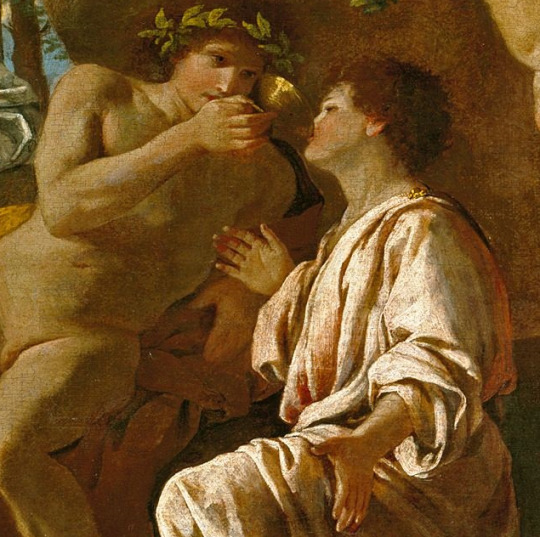

L'Inspiration du poète, Nicolas Poussin, 1628
#art history#art#french art#greek mythology#painting#ancient greece#17th century#baroque art#nicolas poussin#Niedersächsisches Landesmuseum#inspiration#poet#muses#apollo#homoerotic art#aesthethic
75 notes
·
View notes
Text
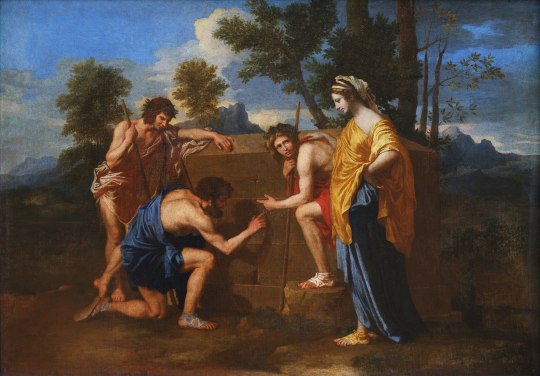
Et in Arcadia Ego by Nicolas Poussin, 1637-1638.
#classic art#painting#nicolas poussin#french artist#17th century#baroque#classicism#pastoral#et in arcadia ego#people#background landscape
61 notes
·
View notes
Text

Nicolas Poussin, The Triumph of Bacchus (detail)
#neoclassical#nicolas poussin#17th century#art detail#painting detail#apollo#sol#helios#classics#not mine
30 notes
·
View notes
Text

The Sacrament of Ordination (Christ Presenting the Keys to Saint Peter)
Artist: Nicolas Poussin (French, 1594-1665)
Date: c. 1636-1640
Medium: Oil on canvas
Collection: Kimbell Art Museum, Forth Worth, Texas, United States
Description
The Sacrament of Ordination is from one of the most celebrated groups of paintings in the entire history of art. The set depicting each of the Seven Sacraments was commissioned from Poussin by the antiquarian Cassiano dal Pozzo, secretary to Cardinal Francesco Barberini. To illustrate ordination - the taking of holy orders to become a priest - Poussin depicted the gospel account of Christ giving the keys of heaven and earth to the kneeling apostle Peter, showing the authority vested in him as head of the Roman church: “You are Peter, and on this rock I will build my church... I will give you the keys of the kingdom of heaven” (Matthew 16:18–19). Poussin infused the picture with emotional power, conveyed through the varied gestures and expressions of each apostle.
#artwork#christianity#narrative art#biblical scene#biblical art#gospel of matthew#ordination#landscape#conversation piece#jesus#keys of the kingdom of heaven#saint peter#biblical#jesus' apostles#men#costume#robe#drapery#hills#trees#french culture#french art#oil painting#fine art#oil on canvas#painting#nicolas poussin#italian painter#european art#17th century painting
12 notes
·
View notes